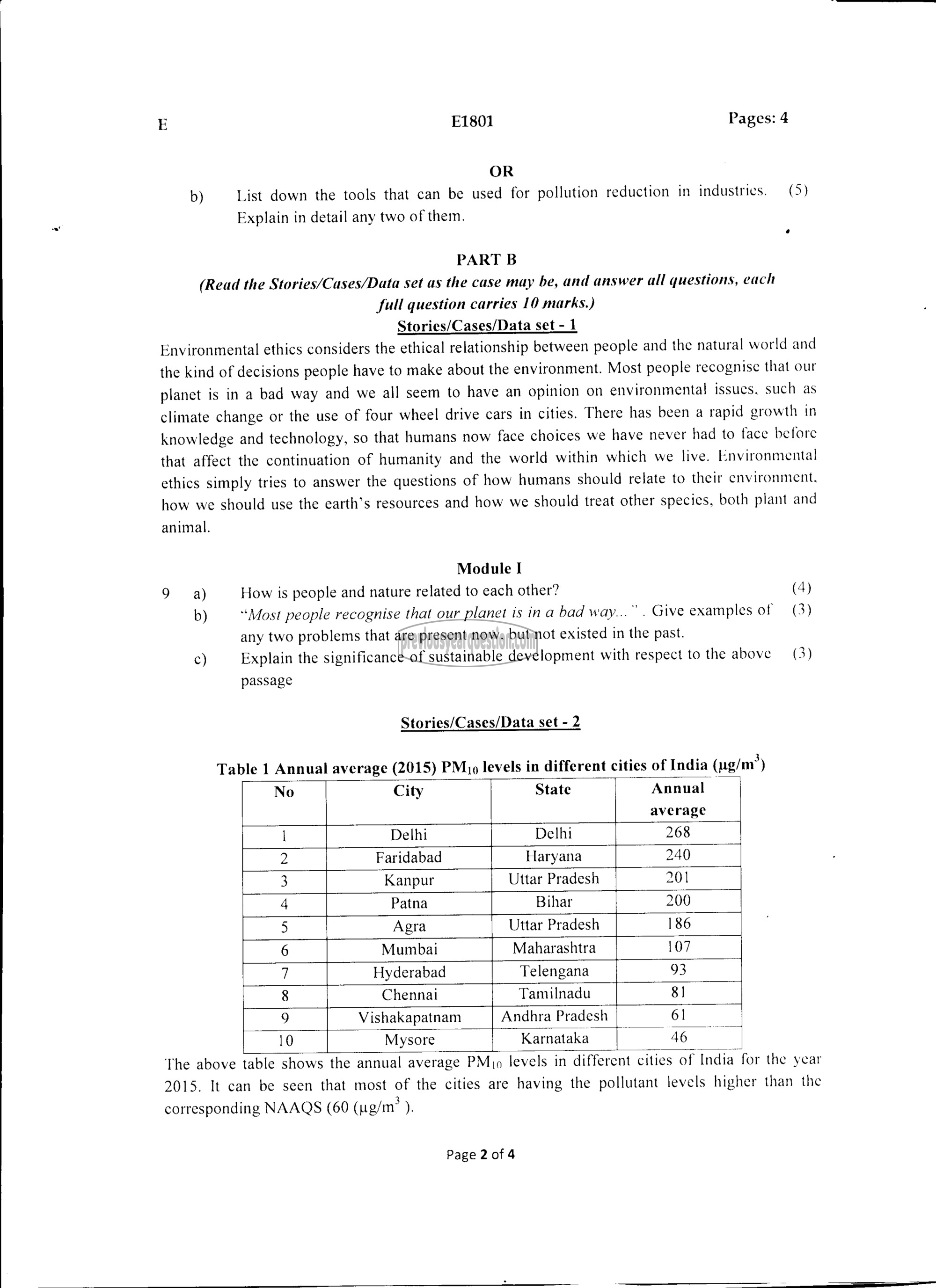APJ ABDUL KALAM TECHNOLOGICAL UNIVERSITY Previous Years Question Paper & Answer
Semester : S1 and S2
Subject : INTRODUCTION TO SUSTAINABLE ENGINEERING
Year : 2018
Term : APRIL
Branch : MECHANICAL ENGINEERING
Scheme : 2015 Full Time
Course Code : BE 103
Page:2
E E1801 Pages: 4
OR
b) List down the tools that can be used for pollution reduction in industrics.
Explain in detail any two of them.
PART B
(Read the Stories/Cases/Data set as the case may be, and answer all questions, each
full question carries 10 marks.)
Stories/Cases/Data set - 1
(5)
Environmental ethics considers the ethical relationship between people and the natural world and
the kind of decisions people have to make about the environment. Most people recognise that our
planet is in a bad way and we all seem to have an opinion on environmental issues, such as
climate change or the use of four wheel drive cars in cities. There has been a rapid growth in
knowledge and technology, so that humans now face choices we have never had to face before
that affect the continuation of humanity and the world within which we 11೪0. Environmental
ethics simply tries to answer the questions of how humans should relate to their environment,
how we should use the earth’s resources and how we should treat other species, both plant and
animal.
Module I
9 ಬ How is people and nature related to each other?
b) “Most people recognise that our planet is in a bad way...” . Give examples of
any two problems that are present now, but not existed in the past.
௦) Explain the significance of sustainable development with respect to the above
passage
Stories/Cases/Data set - 2
Table 1 Annual average (2015) PMyo levels in different cities of India (ug/m?)
No City State Annual
average
pot | Delhi Delhi 268
2 Faridabad Haryana 240
3 Kanpur Uttar Pradesh 201
4 Patna Bihar 200
5 Agra [ Uttar Pradesh 166
| 6 | Mumbai Maharashtra 107
7 Hyderabad Telengana 93
8] Chennai Tamilnadu 81
9 Vishakapatnam Andhra Pradesh 61
10 Mysore Karnataka. 46 पि
The above table shows the annual average PMio levels in different cities of India for the year
2015. It can be seen that most of the cities are having the pollutant levels higher than the
corresponding NAAQS (60 (g/m? ).
Page 2 4
